London cyclist deaths: What other cities could teach the capital
- Published
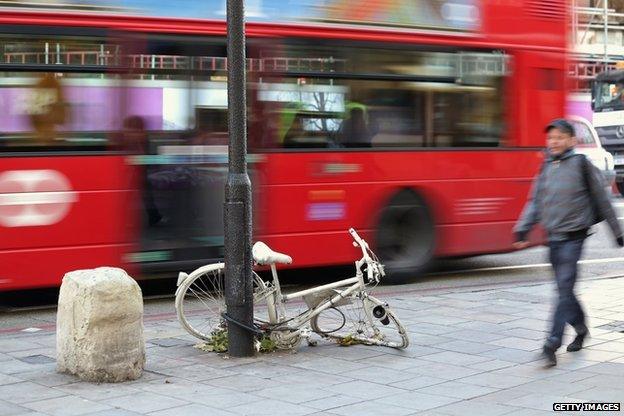
Ghost bikes are sometimes left at sites where cyclists have been killed
A cyclist has died in a crash with a tipper truck, making her the eighth cyclist to die on London's roads this year. Could the capital learn anything from other cities to keep its cyclists safe?
The death of the 26-year-old woman on Monday morning came just three days after a 50-year-old cyclist died following a collision with a car in Harrow. Last year a total of 13 cyclists were killed on London's roads and 14 died in 2013.
Here are five ideas from other cities that might help to improve safety for cyclists.

Amsterdam - Let cyclists rule the streets

There are more bicycles than residents in The Netherlands
If more people commuted by bicycle there would be fewer cars on the roads and therefore fewer vehicles with the potential to kill cyclists.
But it is a Catch-22 situation, because some people are too afraid to cycle because of the safety risks.
This problem has been overcome in The Netherlands, where there are more bicycles than residents and in cities like Amsterdam and The Hague up to 70% of all journeys are made by bike.
But it was not always this way. Car ownership rocketed in the 1950s and 1960s, roads became increasingly congested and there was a huge rise in the number of deaths on the roads.
In 1971 more than 3,000 people were killed by motor vehicles, 450 of them children.
In response a movement called Stop de Kindermoord (Stop the Child Murder) was formed, demanding safer cycling conditions for children.
The Middle East oil crisis of 1973, when oil-producing countries stopped exports to the US and Western Europe, also applied further pressure.
The Dutch government then invested in improved cycling infrastructure and Dutch urban planners started to diverge from car-centric road-building policies.

Paris - Tougher restrictions on lorries
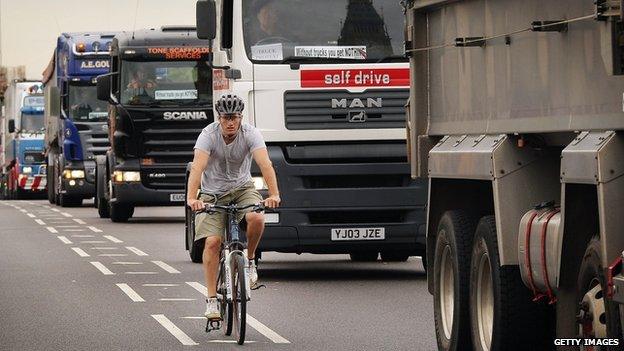
A Safer Lorry Scheme is coming into force in London in September
In Paris and Dublin there are tight restrictions on lorries.
In Paris, trucks bigger than 43 metres squared cannot drive without special dispensation, while smaller trucks are restricted to certain times of the day.
In Dublin there is a ban on vehicles with more than five axles between 07:00 and 19:00 within a designated cordon and permits are needed for vehicles to load and unload.
Olympian cyclist Chris Boardman called on London Mayor Boris Johnson in 2013 to consider banning lorries from some of the capital's roads during peak times.
But Mr Johnson told BBC London 94.9 he was not convinced by the argument, saying a peak-time ban risked damaging London companies and creating a "serious influx as soon as the ban is over".
A Safer Lorry Scheme, external is due to come into force in London from this September, under which large lorries without safety equipment are to be "effectively banned".
Any vehicle weighing more than 3.5 tonnes will need to have side guards and extra mirrors to go on roads in Greater London - apart from motorways.
Baroness Jenny Jones, Green Party peer, has raised the idea of a rush hour ban again, following the latest death.
She tweeted: "So sad and such a waste, external. What is being done to make tipper trucks safer?
"Ban all tipper trucks and large lorries, external at rush hour to give cyclists and pedestrians a chance to stay safe."

Tokyo - More cycling on pavements

Cycling on pavements is tolerated more in Tokyo than in the UK
In Tokyo and elsewhere in Japan it is common to see cyclists and pedestrians sharing pavements.
However, cyclists in the UK can find themselves in trouble with the police for doing the same thing - even if they are a four-year-old girl who still uses stabilisers.
Not all pavement cycling is illegal, as some paths have signs indicating their use is shared between cyclists and pedestrians.
There has been ongoing debate about balancing the safety of cyclists with the safety of pedestrians.
The parents of a Buckingham girl who was killed by a cyclist have campaigned for the introduction of more serious penalties for cyclists who cause deaths.
However, the number of pedestrians killed or seriously injured by cyclists is small compared to the number of cyclists killed by cars, lorries and other road vehicles.

Malmö - Two-way cycle lanes
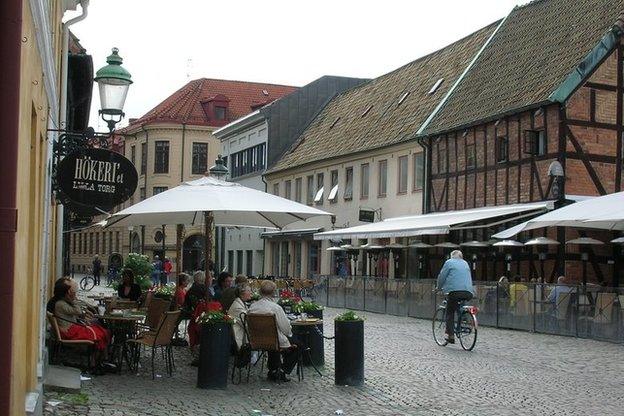
Between 2003 and 2012 there were only 16 cyclists killed in an accident involving a car in Malmö
Most cycle lanes in the UK are painted on the side of normal roads, meaning cars, lorries and other vehicles can drive in them and potentially hit cyclists.
There are further problems when vehicles park in cycle lanes, forcing cyclists to weave in and out of them and into the path of traffic.
In contrast, the Swedish city of Malmö has a network of two-way cycle lanes for cyclists which are kept separate from the areas of the road reserved for cars.
Olle Evenäs, a traffic planner for Malmö, attributed the city's cycling safety record to these lanes.
"We never have painted lanes as cycle tracks; we always have a dedicated surface which is separated from the car traffic by a divider and up a level from car traffic," he said, external.
A higher proportion of journeys are made by bicycle in Malmö compared to London - with estimates usually put at 25% or 30%, compared to 1% or 2% for London.
But between 2003 and 2012 there were only 16 cyclists killed in an accident involving a car in Malmö.

Copenhagen - A 'Cycle Snake'
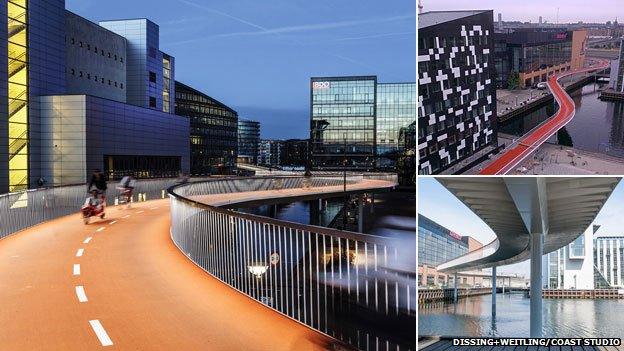
The Cykelslangen, also know as the Cycle Snake, is a bridge just for cyclists
A bright orange bicycle-only bridge called the Cykelslangen opened in Copenhagen, Denmark, last year.
As well as keeping cyclists safely away from cars, the bridge keeps cyclists out of the way of pedestrians on the harbour front.
Young cyclists in Copenhagen told BBC Newsround the bridge, also known as the Cycle Snake, made them feel safer.
- Published22 June 2015
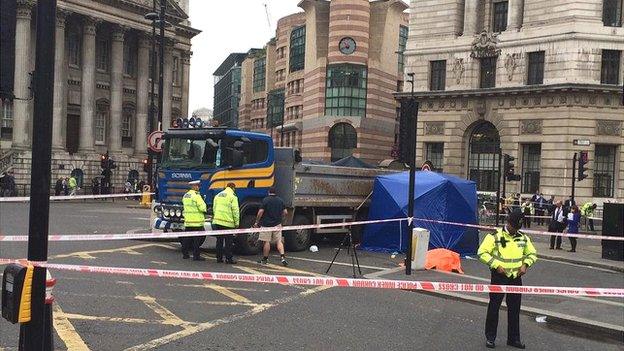
- Published29 May 2015
